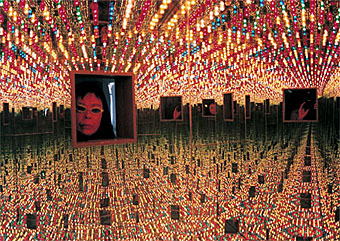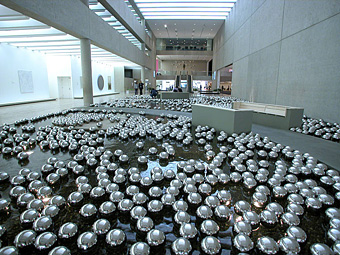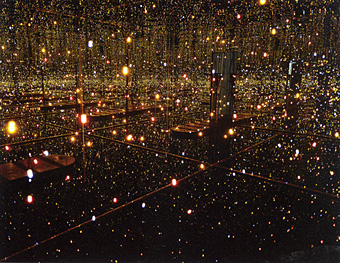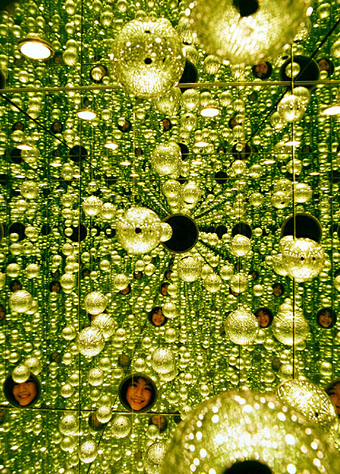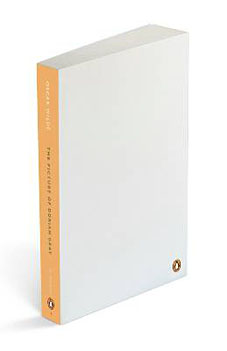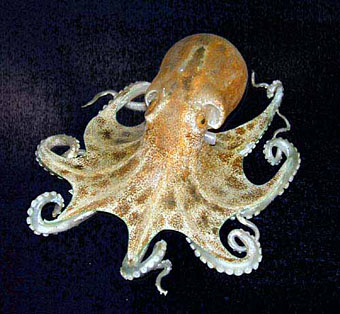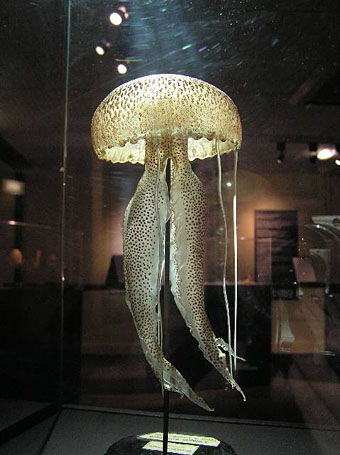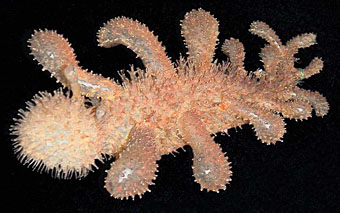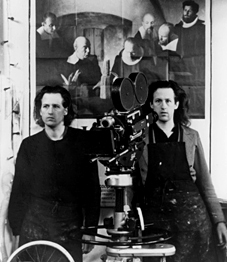
A very welcome release, these are some of my favourite films (I reviewed Street of Crocodiles for Horror: the Definitive Guide to the Cinema of Fear earlier this year). Most of the early ones can be found on the Region 1 release from Kino International but that collection is poorly transferred and the interface has a fault that renders it almost unusable on a computer. The supplementary material on this new collection seems especially good.
Quay Brothers – The Short Films 1979-2003
UK 1979-2003. Dir Quay Brothers. Colour and b&w. cert 12
Disc 1: 134 mins + 60 mins commentary Disc 2: 121 mins. Ratio 1.33:1
Buy now on DVD (£24.99)The BFI has collaborated with the inimitable Quay Brothers to release a truly comprehensive compilation of their short films on DVD; a world first. The Quays were extensively involved with the preparation of the DVD, personally supervising the transfers, recording commentaries on selected titles, and contributing an exclusive 20-minute illustrated video interview.
This two-disc set, in deluxe packaging, collects 13 of the Quay Brothers’ short films, spanning 24 years, in brand new restored and re-mastered editions (six of them with new Quay commentaries), plus a collection of ‘footnotes’ including interviews, alternative versions, unrealised pilot projects and more. An accompanying illustrated colour booklet features an encyclopaedic guide to the Quays’ universe, plus the original illustrated treatment for their best-known film Street of Crocodiles.
Born in Philadelphia and based in London, but with a creative sensibility derived from the remoter corners of Eastern Europe, identical twin animators the Quay Brothers have produced a unique body of work, and have also made a major contribution towards establishing the puppet film as a serious adult art form.
Filtering a huge range of literary, musical, cinematic and philosophical influences through their own utterly distinctive sensibility, each Quay film is a dialogue-free and usually non-narrative experience, riveting the attention through hypnotic control of décor, music and movement. With a grasp of the uncanny that rivals Luis Buñuel and Lewis Carroll, their films evoke half-remembered dreams and long-suppressed childhood memories, fascinating and deeply unsettling by turns.
The collection ranges from their very first puppet film Nocturna Artificialia (1979) to the recent The Phantom Museum (2003). In between there are all the classics: The Cabinet of Jan Svankmajer (1984), a tribute to their great Czech counterpart; This Unnameable Little Broom (1985), a reduction of the Epic of Gilgamesh into a ten-minute frenzy; their acknowledged masterpiece Street of Crocodiles (1986), a visualisation of the labyrinthine world of Polish author Bruno Schulz; the tantalisingly suggestive Rehearsals for Extinct Anatomies (1987) and The Comb (1990); the playful documentary Anamorphosis (1991), uncovering hidden meanings in outwardly conventional paintings; the Stille Nacht quartet (1988-94) of twisted music videos, and In Absentia (2000), their acclaimed collaboration with composer Karlheinz Stockhausen.
The second disc, ‘Footnotes’, contains numerous extras including a newly commissioned filmed interview, distinctive idents for the BFI and BBC2, the satirical short The Summit (1995) and a rare ‘acting’ appearance (albeit in stills) in a clip from Peter Greenaway’s The Falls.
The DVD has been produced by the BFI’s Michael Brooke, Content Developer for Screenonline, the BFI’s extensive online resource dedicated to the history of British film and television. To tie in with the release, Screenonline will be providing extensive background material for each individual title, together with a biography and filmography of the Quays.
Disc 1 – The Films
The Cabinet of Jan Svankmajer (1984)
*This Unnameable Little Broom (1985)
*Street of Crocodiles (1986)
Rehearsals for Extinct Anatomies (1987)
*Stille Nacht I – Dramolet (1988)
The Comb (1990)
Anamorphosis (1991)
*Stille Nacht II – Are We Still Married? (1992)
*Stille Nacht III – Tales From Vienna Woods (1993)
Stille Nacht IV – Can’t Go Wrong Without You (1994)
*In Absentia (2000)
The Phantom Museum (2003)
Disc 2 – Footnotes
Filmed introduction by the Quays
Nocturna Artificialia (1979)
The Calligrapher (1991)
The Summit (1995)
Archive Interview (2000)
The Falls (1980)
BFI ident
Alternative versions
*With new commentary by the Quay Brothers recorded for this DVD.
Elsewhere on { feuilleton }
• The Quay Brothers archive


